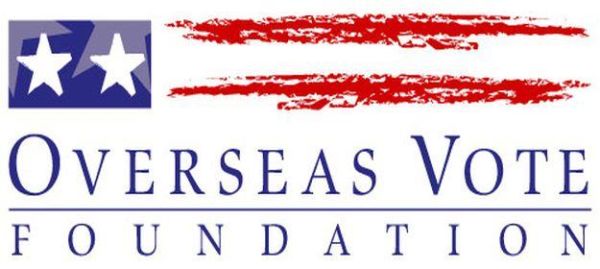Washington, DC – The Overseas Vote Foundation has released its 2012 Post-Election Overseas and Military Voter Survey and Local Election Official Survey Report, which demonstrates that the November 2012 General Election was a tipping point in the use of technology in overseas and military absentee voting.
For overseas and military voters, the Internet is now the number one source of voter registration and ballot request forms. Over 50 percent of survey respondents reported receiving a blank ballot electronically, a 30 percent increase from 2010. However, voters still rely primarily on physical postal methods to submit registration forms and return voted ballots, a practice that election-integrity advocates continue to recommend for security.
The 2012 Post-Election Survey Report
"With the increased use of technology in the voting process new tech-related problems have emerged. Both voters and election officials reported problems with forms transmitted via PDF files, computer compatibility issues, and printing problems," noted Dr. Claire Smith, OVF Research Director.
Drawing from the responses of more than 13,600 voters in 160 countries and more than 2,000 local election officials in the US, the 35-page report documents the increased use of technology in the voting process and also evaluates the impact of the MOVE Act on the 2012 General Election.
"The 2012 survey reveals a measurable positive impact of the MOVE Act on military and overseas voter participation," added Dr. Smith. More voters are receiving their ballots, and receiving them on time. Notably, only 2.5 percent of individuals reported receiving their ballot the week before Election Day or later, down from 5 percent in 2010 and 11 percent in 2008. Survey respondents who reported not receiving a ballot dropped 5 percent overall, from 22 percent in 2008 to 17.3 percent in 2012.
The greatest ongoing confusion among voters stems from the MOVE Act’s elimination of a clause which defined the validity of the official "FPCA" voter registration/ballot request form for overseas and military voters as two General Election cycles. Voters can no longer rely on their forms to keep them registered beyond one calendar year in some states, and one single election in others.
Today's report includes five specific recommendations from OVF as to how to improve upon areas of weak performance. Among these include improving outreach through website optimization. Election officials have created new, innovative tools such as online registration look-up, absentee ballot request, and ballot tracking. However, their usage remains low: only 16 percent of respondents reported using a ballot tracking tool. "Outreach is not only vital to clarifying continuing problems in the voting process, but also to make voters aware of the options and tools available to them," added Dr. Smith.
 |
2012 Post-Election Survey of Overseas and Military Voters
OVF launched its 48-question 2012 Post-Election Military and Overseas Voter Survey on Election Day, November 6, 2012, and it ran through December 15, 2012. OVF reports a 14 percent response rate, as 13,676 UOCAVA voters completed the survey. The survey focused primarily on matters affecting the respondents’ voting experiences. It was intended to gain both quantitative and qualitative data. This is OVF’s fifth post-election voter survey.
2012 Local Election Official Survey
The 2012 Local Election Official (LEO) survey was sent to 7,785 LEOs in jurisdictions around the US. All 50 states, the District of Columbia, American Samoa, Guam, Puerto Rico, and the Virgin Islands were included in the survey distribution. The 38-question LEO survey ran from November 29, 2012 through December 26, 2012. OVF enjoyed its best response to date, as 2,071 LEOs responded, which represents a 26.6 percent response rate. This was the fourth post-election LEO survey that OVF has executed.
First US Vote Post-Election Voter Survey
United States Vote Foundation launched its first Post-Election Voter Survey of domestic US voters on Election Day, November 6, 2012. Of the 9,961 individuals invited to take the 42-question survey, 1,079 completed the survey for a 10.8 percent response rate. The data gives us some insight into the domestic voting process. For example, like overseas and military voters, domestic voters (59 percent) are using the Internet to create registration forms and nearly three-quarters (74 percent) of survey respondents used a website to download or generate an absentee ballot request.
For Further Information, Please Contact:
Dr. Claire Smith
research(at)overseasvotefoundation.org
+1 (202) 470-2480
About Overseas Vote Foundation
Overseas Vote Foundation (OVF) helps US overseas and military voters participate in federal elections by providing public access to innovative voter registration tools and services. It is a nonpartisan 501(c)(3) nonprofit organization. Through its technology development, research, and conference programs, OVF leads the nation’s improvement of voter-friendly online absentee balloting services. More information is available on the OVF website - www.overseasvotefoundation.orgm, Twitter - (at) overseasvote, Facebook - Overseas Vote Foundation, and YouTube - www.youtube.com/overseasvote.
About US Vote Foundation
US Vote Foundation provides domestic United States voters with public access to innovative voter registration tools and services. It is a trademarked initiative of the nonpartisan, nonprofit Overseas Vote Foundation. More information is available at www.usvotefoundation.org, Twitter - (at) us_vote, Facebook - US Vote, and Youtube - www.youtube.com/usvotefoundation.


